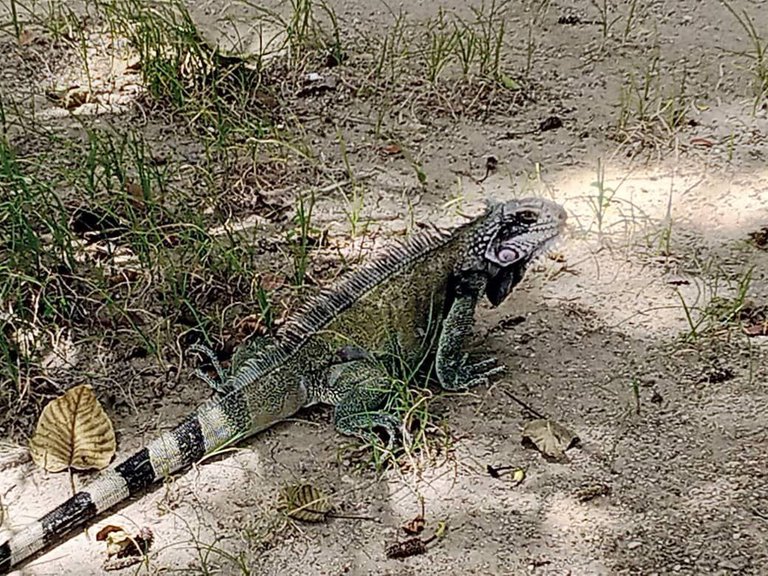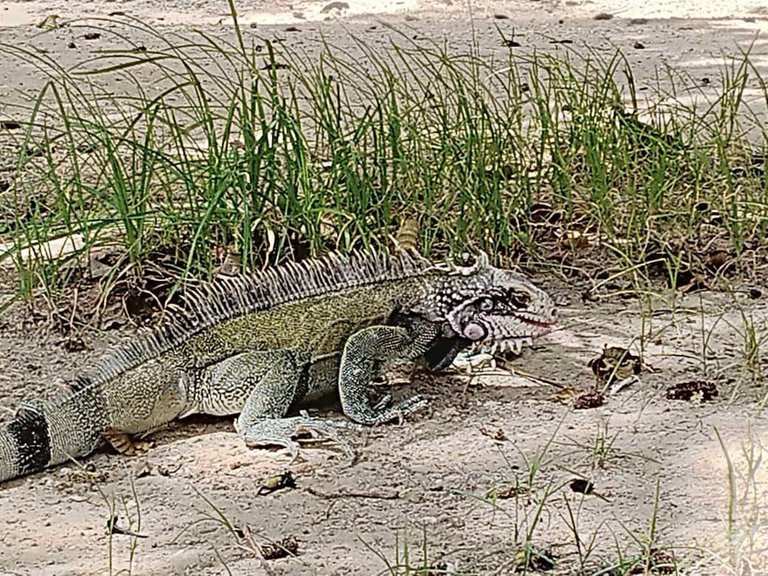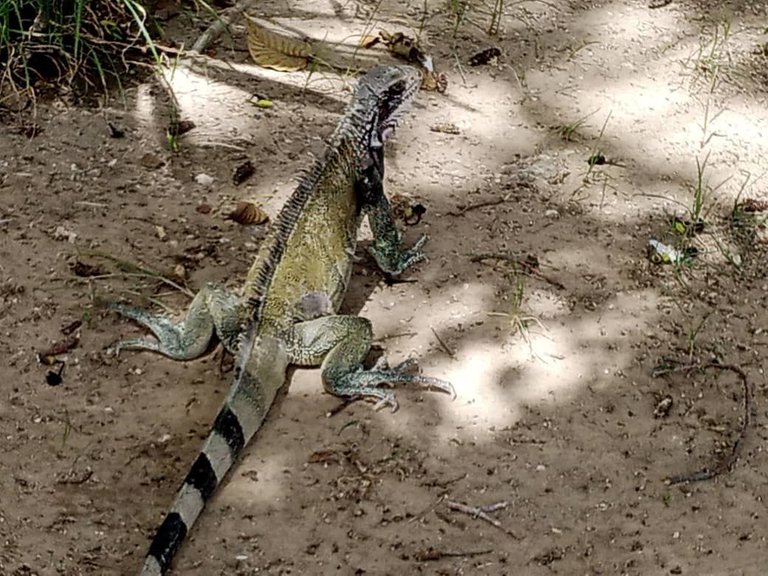
What is the iguana?
The name iguana is given to a genus of large scaly reptiles, scientifically called the family iguaninae.
Habitat
These reptiles are usually found in parts of South, Central and North America. Iguanas are able to adapt to sun and rain, for them the most important thing is to find water and food. Iguanas usually inhabit humid areas where vegetation is abundant; for example, jungles, rivers, grasslands.
Also where the temperature is between 26 and 28 degrees Celsius. Trees of great height are their favorite places, they can climb them easily and at great speed.

Feeding
Iguanas are herbivores, feeding specifically on plants, herbs, flowers, fruits and vegetables. But this diet changes depending on age and weight; for example, adult iguanas usually eat every 24 hours, while younger iguanas eat at least once a day. Thanks to this type of feeding, iguanas have very acute senses of sight and hearing, which will help them to flee in a dangerous situation.
In their natural habitat, a particularity that accompanies these reptiles in their feeding is the practice of coprophagy (voluntary ingestion of feces), especially frequent in younger individuals, they usually eat the excrement of their companions to obtain intestinal flora, while in adults, this practice is not common.
Reproduction
Before mating, iguanas usually court each other by swinging their heads and tails, and it is at that moment that the male mounts the female. If at that instant the female iguana is ready to mate, she will receive the male, but if not, then she will let him go.

Iguana reproduction is oviparous, that is, a reproductive process where the egg completes its embryonic development externally. The iguana can lay 20 to 70 eggs, and incubation will range from 60 to 110 days approximately.
In the wild, the female will look for soft areas where she can dig a deep hole and deposit her eggs, which are covered with soil, away from predators. It is estimated that the life span of these reptiles is 10 to 20 years.
Images of my autorship
Español

¿Qué es la iguana?
El nombre de iguana se da a un género de grandes reptiles escamosos, llamado científicamente familia iguaninae.
Hábitat
Estos reptiles suelen encontrarse en zonas de América del Sur, Central y del Norte. Las iguanas son capaces de adaptarse al sol y a la lluvia, para ellas lo más importante es encontrar agua y comida. Las iguanas suelen habitar en zonas húmedas donde la vegetación es abundante; por ejemplo, selvas, ríos, praderas.
También donde la temperatura oscila entre los 26 y 28 grados centígrados. Los árboles de gran altura son sus lugares favoritos, pueden trepar por ellos con facilidad y a gran velocidad.
Alimentación
Las iguanas son herbívoras y se alimentan específicamente de plantas, hierbas, flores, frutas y verduras. Pero esta dieta cambia según la edad y el peso; por ejemplo, las iguanas adultas suelen comer cada 24 horas, mientras que las más jóvenes lo hacen al menos una vez al día. Gracias a este tipo de alimentación, las iguanas tienen unos sentidos de la vista y el oído muy agudos, lo que les ayudará a huir en una situación de peligro.
En su hábitat natural, una particularidad que acompaña a estos reptiles en su alimentación es la práctica de la coprofagia (ingestión voluntaria de heces), especialmente frecuente en los individuos más jóvenes, suelen comer los excrementos de sus compañeros para obtener flora intestinal, mientras que en los adultos, esta práctica no es habitual.
Reproducción
Antes del apareamiento, las iguanas suelen cortejarse balanceando la cabeza y la cola, y es en ese momento cuando el macho monta a la hembra. Si en ese instante la iguana hembra está preparada para aparearse, recibirá al macho, pero si no, lo dejará marchar.
La reproducción de la iguana es ovípara, es decir, un proceso reproductivo en el que el huevo completa su desarrollo embrionario de forma externa. La iguana puede poner entre 20 y 70 huevos, y la incubación oscila entre 60 y 110 días aproximadamente.
En la naturaleza, la hembra buscará zonas blandas donde pueda cavar un agujero profundo y depositar sus huevos, cubiertos de tierra, lejos de los depredadores. Se estima que la vida de estos reptiles es de 10 a 20 años.
Imágenes de mi autoría.
 )

 )
)
It had already been suggested to him to place a bibliographical source from which he extracted the information! I will not be able to vote your post! please take into account our tips to avoid being silenced! remember we do this to avoid plagiarism within HIVE, if you make the correction let me know so I can vote for your post!
I understand
Source of potential plagiarism
There is reasonable evidence that this article has been spun, rewritten, or reworded. Posting such content is considered plagiarism and/or fraud. Fraud is discouraged by the community and may result in the account being Blacklisted.
Guide: Why and How People Abuse and Plagiarise
If you believe this comment is in error, please contact us in #appeals in Discord.